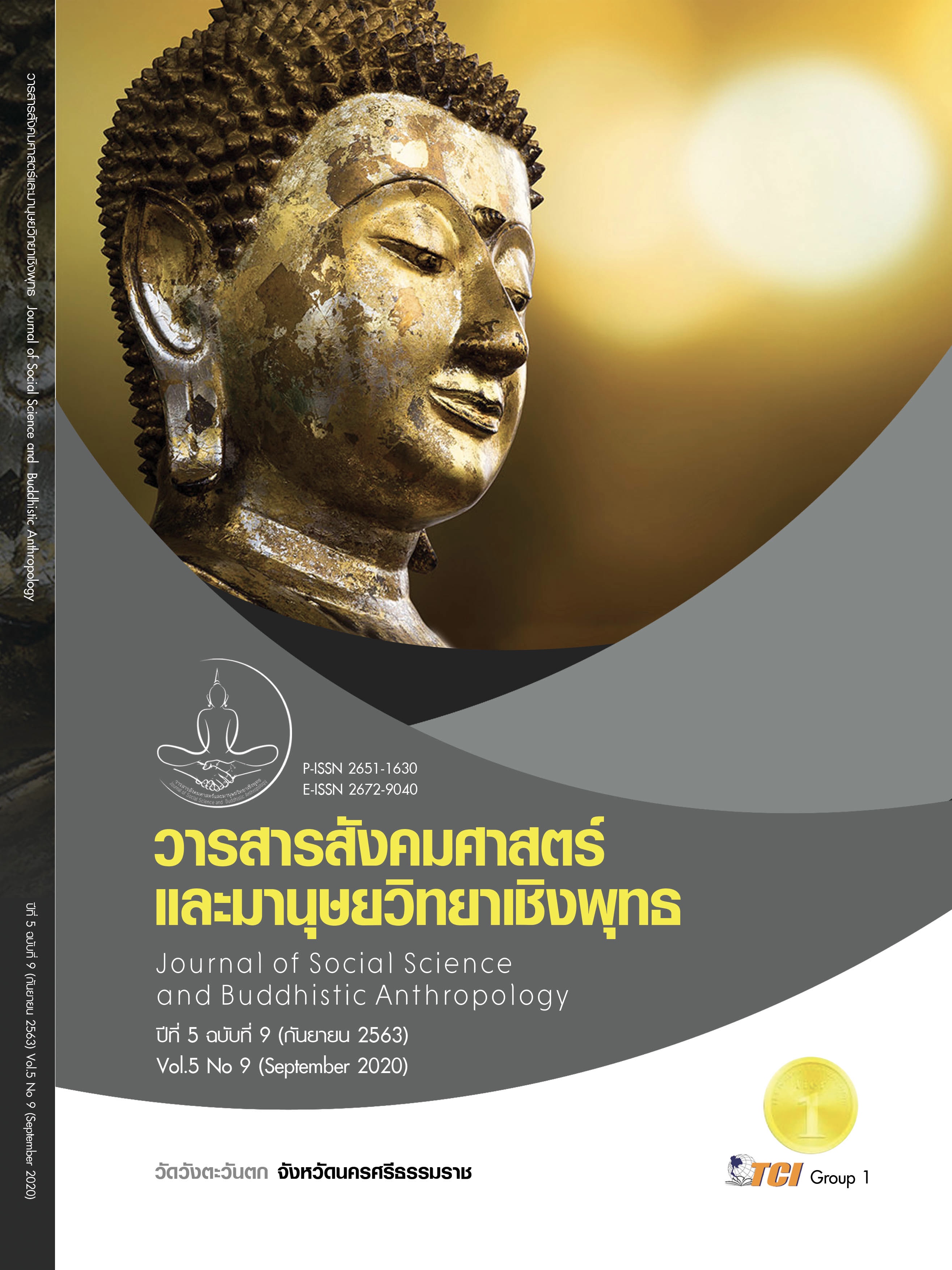PHRAKRUSIKA THE LEGEND: HISTORY PREVENT AND DEVELOPMENT TO THE WORLD HERITAGE OF PHRABOROMMATHATCHEDI NAKHON SI THAMMARAT
Keywords:
Phrakrusika, History, Phraborommathatchedi Nakhon Si ThammaratAbstract
The purposes of this article were 1) To study the history of the legend of Phrakrusika, 2) To study the roles and duties of preserving the PhraBorommathatchedi Nakhon Si Thammarat of Phrakrusika, and 3) to study the guidelines for development to the World Heritage of PhraBorommathatchedi Nakhon Si Thammarat. This is qualitative research by interviewings 12 key informants, presenting the descriptive research results. The study found that: 1) The history of the legend of Phrakrusika. It is a myth that is associated with the construction of PhraBorommathatchedi Nakhon Si Thammarat. There is a history of the preserving for PhraBorommathatchedi Nakhon Si Thammarat. 2) The roles and duties of preserving the PhraBorommathatchedi Nakhon Si Thammarat of Phrakrusika. Phrakrusika is responsible for preserving the PhraBorommathatchedi Nakhon Si Thammarat and governing the Sangha in the four directions, namely Phrakrukakaew, preserving in the east, PhrakruKaram in the south, PhrakruKachat in the west and PhrakruKaderm in the north. 3) The guidelines for development to the World Heritage Sites of PhraBorommathatchedi Nakhon Si Thammarat. There are developmental guidelines, consisting of 1) appointing an operational committee, 2) studying regulations and procedures, 3) studying the rules for registering as a cultural heritage, 4) commissioning various operations, 5) proposing PhraBoromathatchedi Nakhon Si Thammarat to the World Heritage, 6) The World Heritage Committee inspected the area, 7) Announced the inspection results. At this time, the board has implemented various development activities, including 1) management, 2) landscape/area management, 3) conservation, 4) community participation, and 5) pollution management.
References
กษิญา เก้าเอี้ยน. (2559). แนวทางการออกแบบและพัฒนาผลิตภัณฑ์สาธารณะเพื่อส่งเสริมการเป็นมรดกโลกวัดพระมหาธาตุวรมหาวิหาร จังหวัดนครศรีธรรมราช. ใน วิทยานิพนธ์สถาปัตยกรรมศาสตรมหาบัณฑิต สาขาวิชาการออกแบบอุตสาหกรรม. สถาบันเทคโนโลยีพระจอมเกล้าเจ้าคุณทหารลาดกระบัง.
เกรียงไกร เกิดศิริ. (2560). พระบรมธาตุนครศรีธรรมราช: มรดกพุทธศาสนสถาปัตยกรรมศูนย์กลางพระพุทธศาสนาเถรวาทแห่งคาบสมุทรภาคใต้. (พิมพ์ครั้งที่ 3). กรุงเทพมหานคร: อี.ที.พับลิชชิ่ง จำกัด.
ฉัตรชัย ศุกระกาญจน์ และคณะ. (2552). พระบรมธาตุสู่มรดกโลก. นครศรีธรรมราช: โรงพิมพ์อักษรการพิมพ์.
ณรงค์ นุ่นทอง. (2554). พระรัตนธัชมุนี (ม่วง รตนธชเถร) ผู้อำนวยการจัดการศึกษามณฑลนครศรีธรรมราช ในสมัยรัชกาลที่ 5 – บิดาแห่งการศึกษาของภาคใต้. ใน หนังสือจัดพิมพ์เป็นที่ระลึกในงานฌาปนกิจศพ อาจารย์สงวน คลิ้งคล้าย ณ ฌาปนสถานวัดหน้าพระบรมธาตุ จังหวัดนครศรีธรรมราช เมื่อวันที่ 3 มีนาคม พ.ศ. 2554. กรีนโซนอินเตอร์ 2001.
ธิดา สาระยา. (2526). พัฒนาการของรัฐบาลบนคาบสมุทรไทย เน้นตามพรลิงค์ (คริสต์ศตวรรษที่ 6 - 13) ในประวัติศาสตร์และโบราณคดีนครศรีธรรมราช ชุดที่ 3. นครศรธีรรมราช: วิทยาลัยครูนครศรธีรรมราช.
ประทุม ชุ่มเพ็งพันธุ์. (2555). เมืองนครศรีธรรมราชมหานคร. กรุงเทพมหานคร: ดวงกมลพับลิชชิ่ง.
ประภัสสร์ ชูวิเชียร. (2553). พระบรมธาตุเจดีย์นครศรีธรรมราช มหาสถูปแห่งคาบสมุทรภาคใต้. กรุงเทพมหานคร: เมืองโบราณ.
ปราโมทย์ ทัศนาสุวรรณ. (2534). จังหวัดของเรา 14 จังหวัดภาคใต้. กรุงเทพมหานคร: บริษัทโรงพิมพ์ไทยวัฒนาพานิช จำกัด.
ระรวย อรรถวิภาคไพศาลย์. (2538). นำชมนครศรีธรรมราช เมืองประวัติศาสตร์กว่า 1000 ปี. กรุงเทพมหานคร: โรงพิมพ์ ดี แอน เอส.
ศักดิ์ชัย สายสิงห์. (2560). เจดีย์ในประเทศไทย: รูปแบบ พัฒนาการ และพลังศรัทธา. กรุงเทพมหานคร: ด่านสุทธาการพิมพ์.








